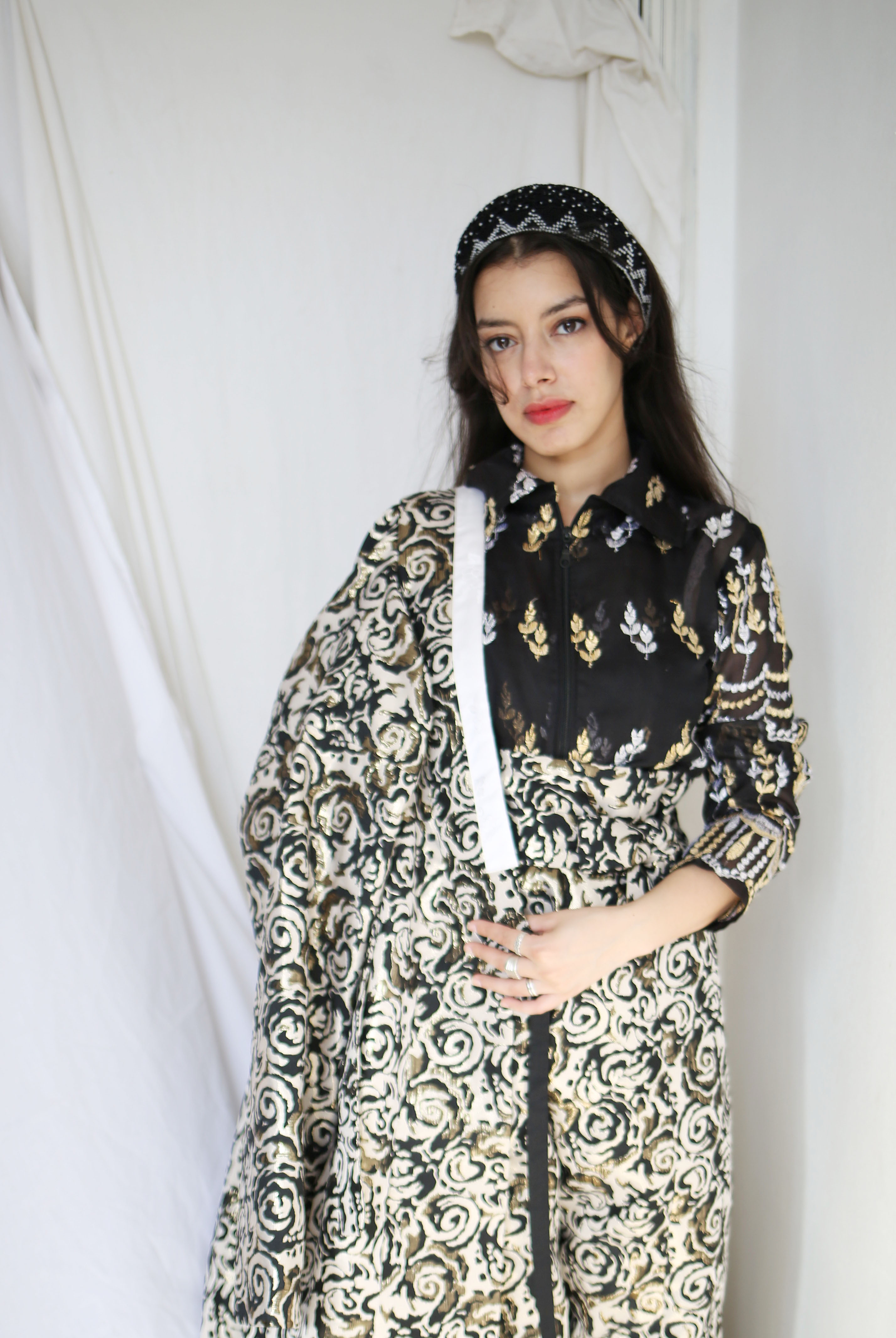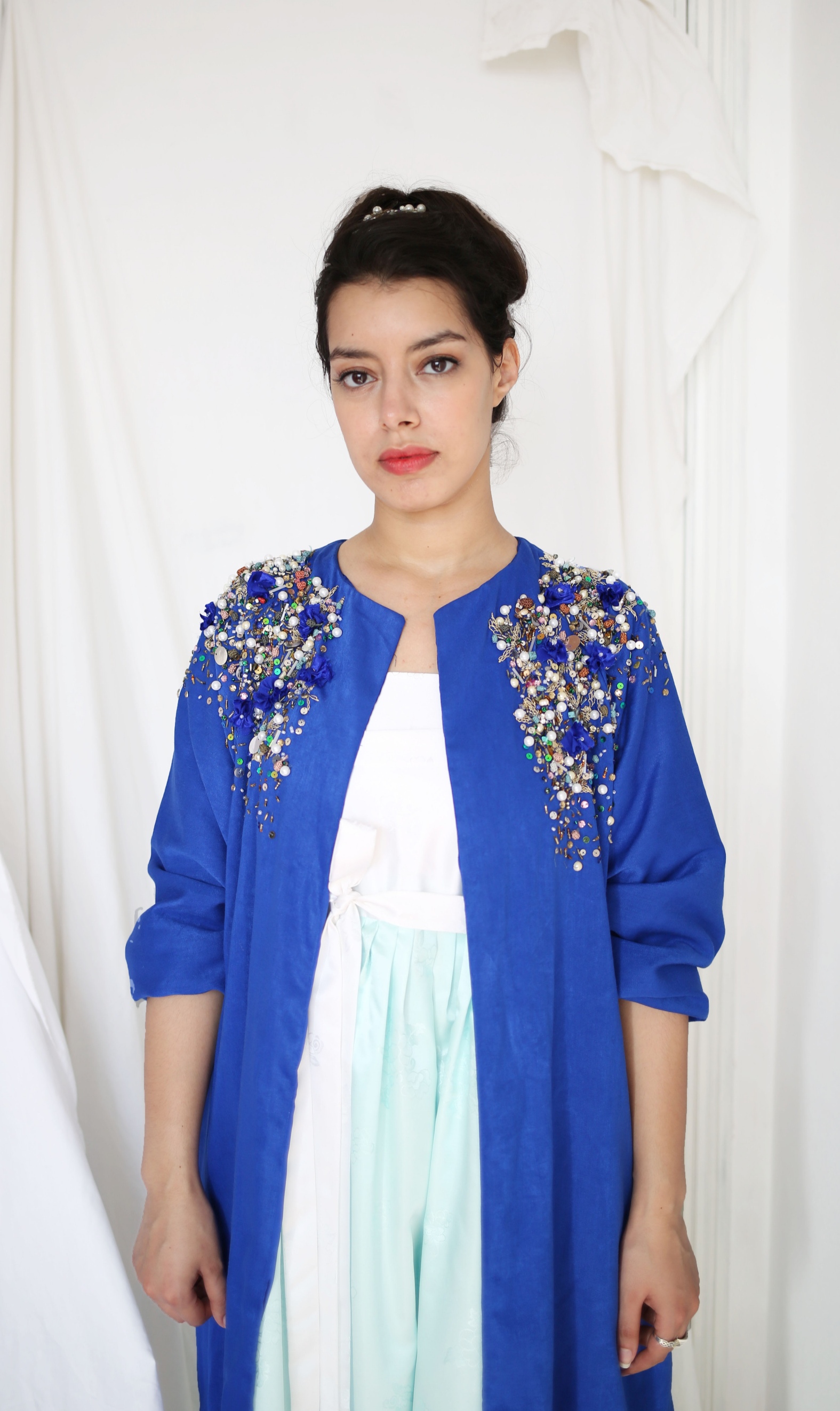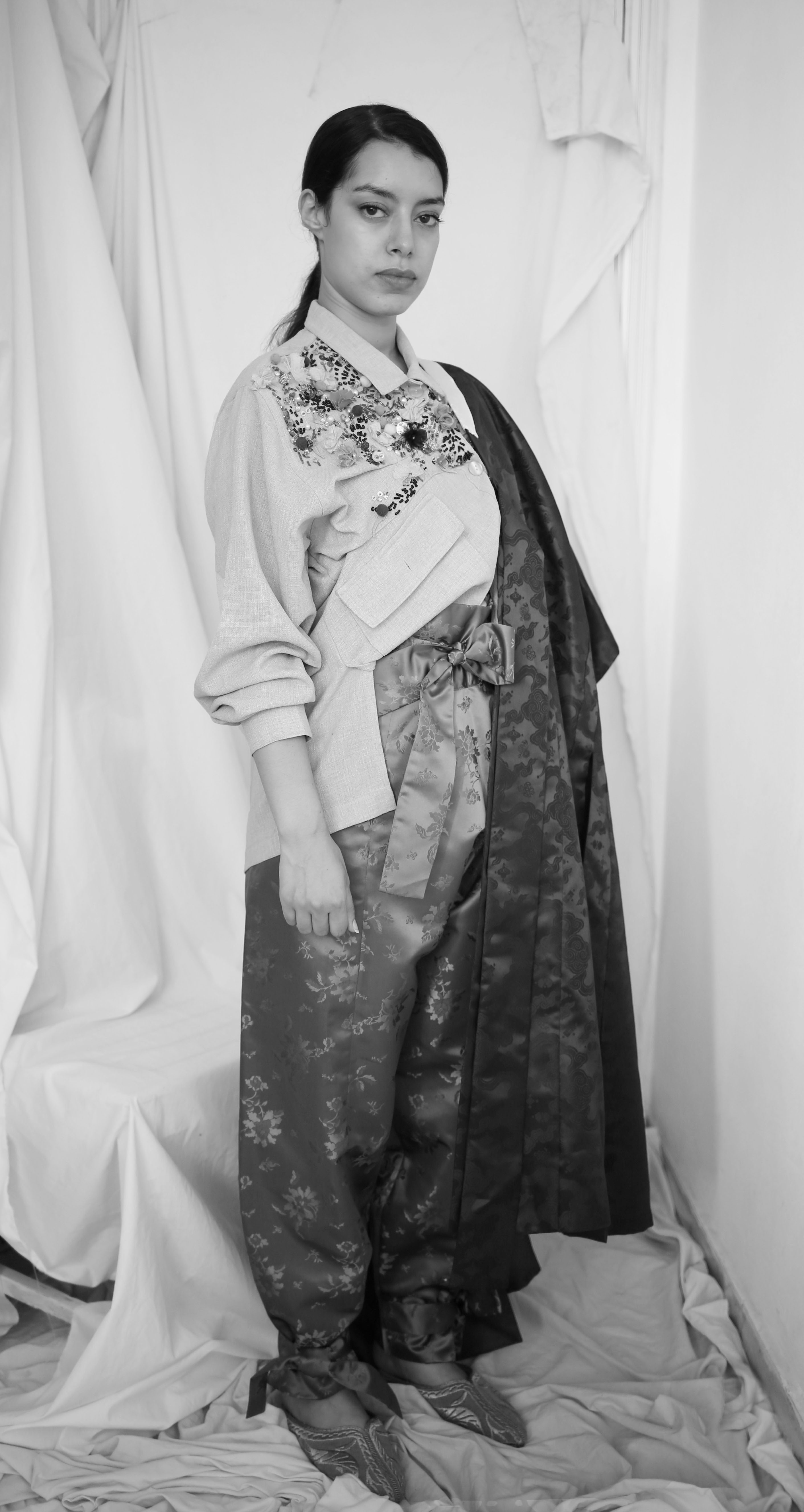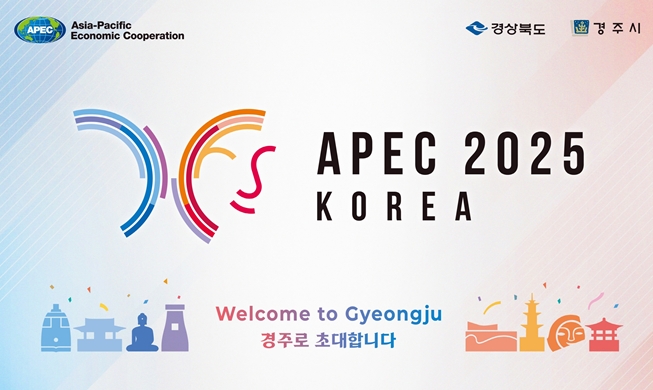- 한국어
- English
- 日本語
- 中文
- العربية
- Español
- Français
- Deutsch
- Pусский
- Tiếng Việt
- Indonesian
By Honorary Reporter Meryem Qozbour from Morocco
Photos = Ghita Laskrouif
The traditional Korean attire Hanbok has gotten internationally known through Hallyu in the form of K-dramas and K-pop music videos. Many fashion designers abroad have grown attracted to the clothing, including Ghita Laskrouif, a Moroccan who has incorporated Hanbok into her nation's traditional costumes.
The following are excerpts from an interview with her.
Please introduce yourself.
My name is Ghita Laskrouif, a Moroccan fashion designer with a background in fine arts and fashion design. I'm also the founder of a self-named fashion brand. I am especially interested in ethical and slow fashion, spirituality in art, and domestic and international fashion.

How did you hear about Hanbok and what attracted you to it?
As a fashion designer, I'm aware of many historical, traditional garments and textiles. Yet I'm more interested in the stories behind what we wear more than the clothing itself. To me, textiles are a second language.
I was asked to take part in an artistic event of the educational project Youthpia via Instagram. The organizers asked if I'd be more interested in a fashion collaboration in which people can experience and learn about Moroccan and Korean fashion. I accepted the proposal and we started to organize it.
The idea initially came from Youthpia because of many unexpected changes. The first idea was a collaborative event for displaying and discussing Moroccan and Korean fashion, but due to COVID-19 in Korea, a trip to the nation was canceled. So the organizers suggested that they send me a Hanbok outfit made by a Korean master for me to upcycle it following the theme of modest fashion. Then Morocco went into lockdown due to the pandemic, and the artisans I usually work with were unavailable. So we just went with a photoshoot in which my designs were mixed with Hanbok in my own "modest" vision and style.

What are the similarities and differences between the Moroccan traditional wear caftan and Hanbok?
It's hard to define because both countries have historically been under different colonial rulers and have different ethnicities and geographical zones, so caftan and Hanbok each carry different stories of peoples and tribes spiritually and socially. But if we talk just about what is considered more "standard" caftan and Hanbok today, I think Hanbok pieces have strong colors, symbols and cuts that make Hanbok different. But in the total look, there are a lot of similarities. Both are high style and surprisingly comfortable though made for special occasions. Wearing a caftan or Hanbok is an art all on its own.
How was the process of combining Hanbok and Moroccan costumes?
It wasn't easy to combine both my designs and Hanbok because the latter has more vivid colors and straight or curved lines. It has colors I've never explored before. I made sure to keep the pieces that offer a modest look when combined but a bit of misunderstanding ensued about what modest means in different cultures. I find it interesting to define things that seem simple but have a deeper cross-cultural understanding.

What other plans or projects do you have?
I'm working to make my designs available online, but COVID restrictions are hindering my plans for new projects.
enny0611@korea.kr
*This article is written by a Korea.net Honorary Reporter. Our group of Honorary Reporters are from all around the world, and they share with Korea.net their love and passion for all things Korean.
Most popular
- Grammy-winning producer calls Suga of BTS 'amazing artist'
- 'Universal love, family' themes fuel success of 'King of Kings': director
- Council sets minimum hourly wage in 2026 at KRW 10,320
- Expansion of foreign app system raises tourist convenience
- Nat'l population diversity rose nearly 8% from 2018-22: study
